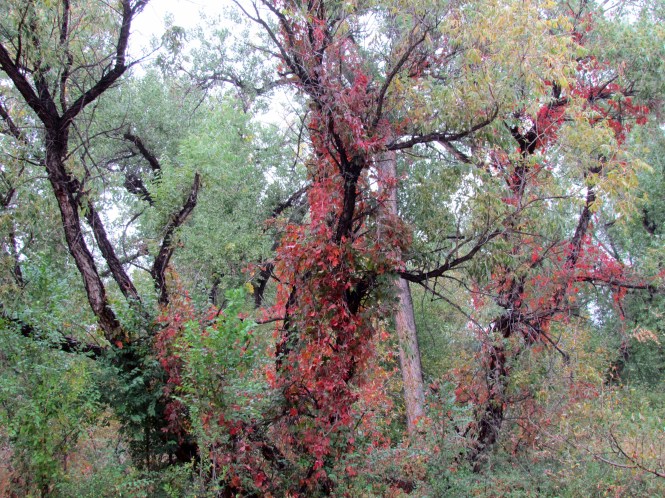We Coloradans are spoiled by living in a state that claims at least 300 sunny days per calendar year. Colorado Springs has benefited from this natural phenomenon since its founding in 1871, even calling itself “City of Sunshine”, to better attract tourists and health-seekers. For sufferers of consumption, a change in climate was frequently a desperate attempt to cure this age-old scourge of humanity. Before its cause was known, and before the discovery and development of effective antibiotics in the 1940s, treatment consisted of a multi-pronged approach, with exposure to fresh air and sunshine being one of its mainstays.
Though most visitors and residents no longer arrive in Colorado Springs for health reasons, all still revel in our Columbine-colored skies, and the mood-enhancing effects of solar rays (their known potential for adverse health-effects notwithstanding). Originating from Germany, I was accustomed to extended episodes of gray and gloomy conditions, but it did not take long to convert me to the pleasures associated with a helio-dominated climate. But even in this sun-kissed region, the sun’s smiley face is concealed periodically. We might even forget that the Rocky Mountains rise directly in front of our doorsteps, when banks of mist and fog shroud our local fourteener, Pikes Peak, and its lesser but no less attractive neighbors.




During one such beclouded stretch in early autumn, I stroll through one of my favorite local refuges, Fountain Creek Regional Park, also the focus of several previous posts (Monarchs and Milkweed, An Ode to Fountain Creek Regional Park, and Summer Sorrow). An alteration in weather is commonly paralleled by an alteration in animal activity, apparent as soon as I approach the Nature Center. A gobble of fourteen Wild Turkeys greets me from the meadow adjacent to the parking lot. They don’t flee as is their wont and, more remarkably, still roam the same vicinity two hours later, when I complete my loop.



The lower than usual sky seems to slow down pace and movement of all life. Whereas color and contrast diminish noticeably, many structures and textures are highlighted and brought into sharper focus, drawing my eyes to details I might otherwise overlook.



I am grateful for the brightness and warmth that spoil us regularly, but instead of bemoaning the occasional sun-deprived period, I try to embrace it, resting assured in the knowledge that luminous and brilliant days will, once again, follow.
Click here for the German version/klicken Sie bitte hier für die deutsche Version:
https://tanjaschimmel.wordpress.com/2017/10/26/der-glanz-eines-verregneten-tages/


Lovely series of images Tanja, especially the first one with all those rain/mist/dew droplets.
I never get up early enough to see mist or fog, but I do appreciate your sunny/foggy comparison photos.
Those red leaves against the black tree trunks and branches are beautiful too.
Every season has its good points, not matter where you live (I think).
LikeLiked by 1 person
Thank you, Vicki, I love that photo, too. I was lucky to find this lovely plant with all the dew drops glistening, despite the overcast sky.
You are right, every season has its goods points, and it’s good to get outside in different weather and at different times of day, too, because appearances will change dramatically.
Best,
Tanja
LikeLiked by 1 person
That first capture looks like jellyfish close-up! 😀 Beautiful!
LikeLike
Thank you, Nirmala. That’s an entirely new take on the photo, but a very innovative one. I like it. 🙂
LikeLiked by 1 person
Your dew-covered plant capture looks like jewels, beautiful! The colors of fall become ablazed on a rainy, dreary day. And I love that tree ‘knot’, that’s pretty cool!
LikeLiked by 1 person
Thank you so much for your interest and kind comments, Donna.
Best wishes,
Tanja
LikeLiked by 1 person
I appreciate the colors and shapes in your final triad of photographs. Do you know what kind of climbing vine it is that has turned red?
LikeLiked by 1 person
Thank you for your interest, Steve. I don’t know the answer to your question. When I took the photo, I did not pay close attention. I just enlarged the photo on my screen, and the leaves resemble maples. I learned that there is a plant called a vine maple, a tree whose growth is akin to a vine’s, but all the photos on line show it to look like a tree. Next time I am there, I will try to take a closer look.
LikeLike
I wonder if it might be Virginia creeper (Parthenocissus quinquefolia), which the USDA map shows present in El Paso County, Colorado. Here’s a picture of it turning colors in Austin:
LikeLiked by 1 person
You are probably right, Steve, thank you for pointing this out, and for the interesting link. I will still try to take a closer look when I get back there.
LikeLike
Look at that red color tree..! Is that a tree?
It’s really cool to see how the appearance of nature changes with the weather. I love the sun and blue sky but it’s like a feel more relaxed looking at pics of the fog.
LikeLiked by 1 person
It is a tree, but as a very observant reader pointed out to me, the red leaves probably belong to a vine, possibly Virginia Creeper!
It is nice to experience the same place in different atmospheres, based on the weather.
LikeLike
Virginia Creeper….that’s a beautiful creature but sounds like a mass murderer..!
LikeLiked by 1 person
LOL-only you could come us with this theory…
LikeLiked by 1 person
Wow- this looks so peaceful! What a lovely day.
LikeLike